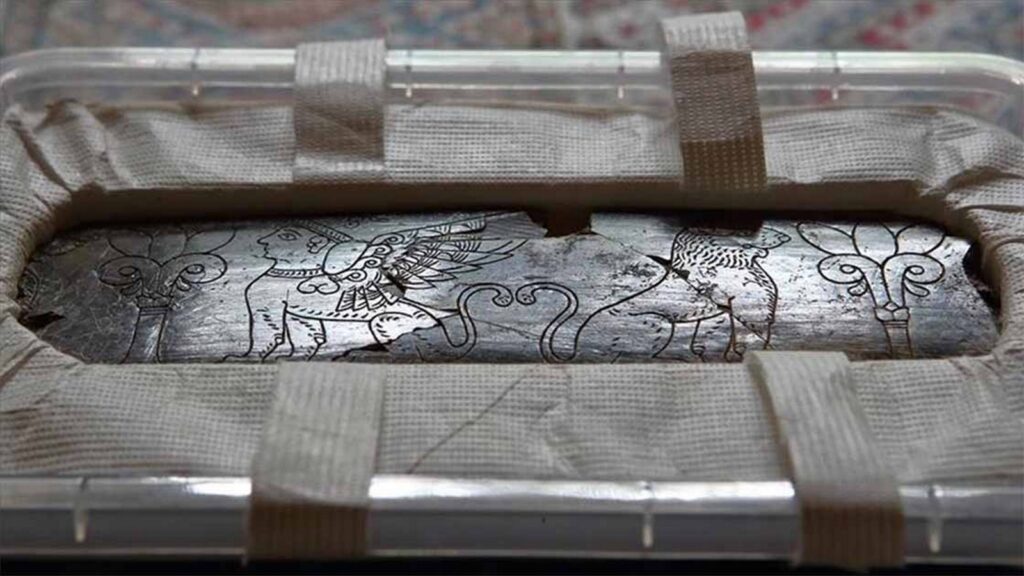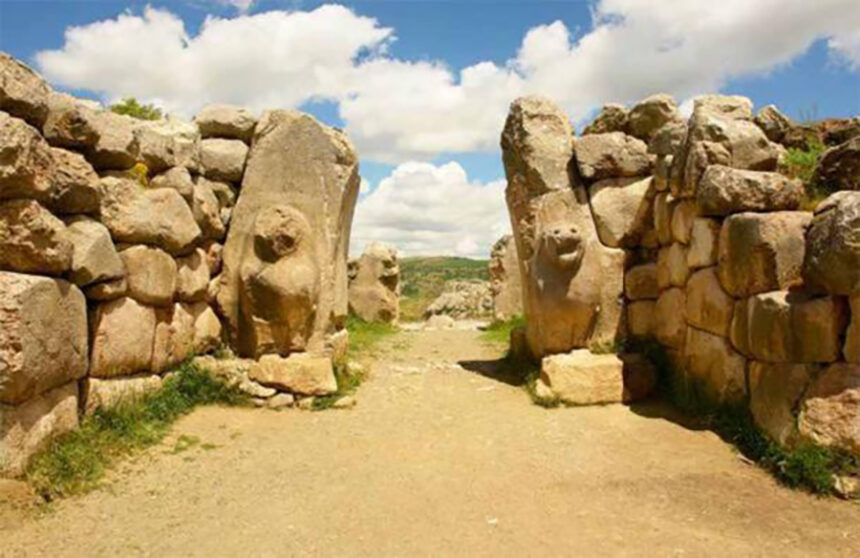A Unique Discovery
During excavations at Hattusa, the capital of the Hittite kingdom in the late Bronze Age, archaeologists unearthed a remarkable artifact made of Hattusa ivory, estimated to be approximately 2,800 years old. This significant find, discovered on the northwest-facing slope of the Great Fortress area, adds to the rich archaeological heritage of the site, which has been under excavation for over a century.

Symbolism of Power: The Lion Motif
Crafted from ivory with intricate etchings, the artifact measures nearly 30 centimeters in length and 10 centimeters in width. Its design features a sphinx, a lion, and two trees of life, symbolizing power and royalty. The lion motif, a recurring symbol in ancient civilizations, has deep historical roots, with evidence dating back to prehistoric times and found in various ancient cultures such as the Sumerians and Egyptians.
Artistic Influence and Purpose
While the exact purpose of the artifact remains speculative, it is believed to have been part of a wooden box or furniture. Andreas Schachner, leading the excavations, suggests that the artifact was likely used as a decoration. Its detailed craftsmanship and unique scene make it a significant discovery, shedding light on the artistic and cultural identity of Hattusa during the Iron Age.
Cultural Interactions and Influence
The discovery provides insights into the connections between Hattusa and Southeastern Anatolia, as well as regions to the Southwest and Greece during the first millennium BC. Through artistic analysis, researchers aim to understand the cultural exchanges that shaped Hattusa’s artistic identity during this period of history.
Hattusa: A Hub of Trade and Power
As the political and administrative center of the Hittite Empire, Hattusa played a crucial role in ancient trade routes, flourishing until its destruction around 1180 BC. Its rediscovery in the early 20th century led to systematic excavations, uncovering artifacts and cuneiform tablets that provide invaluable insights into Hittite civilization.
Preservation and Exhibition
Once scientific studies are complete, the artifact will be displayed at the Boğazköy Museum, offering the public a glimpse into the art and culture of the period. Schachner and the archaeology team express their excitement and appreciation for the discovery, recognizing its importance in understanding the history of Hattusa and the Hittite Empire.



Leave a Reply